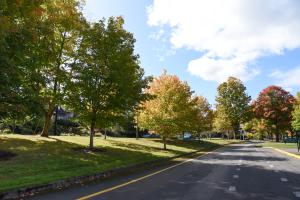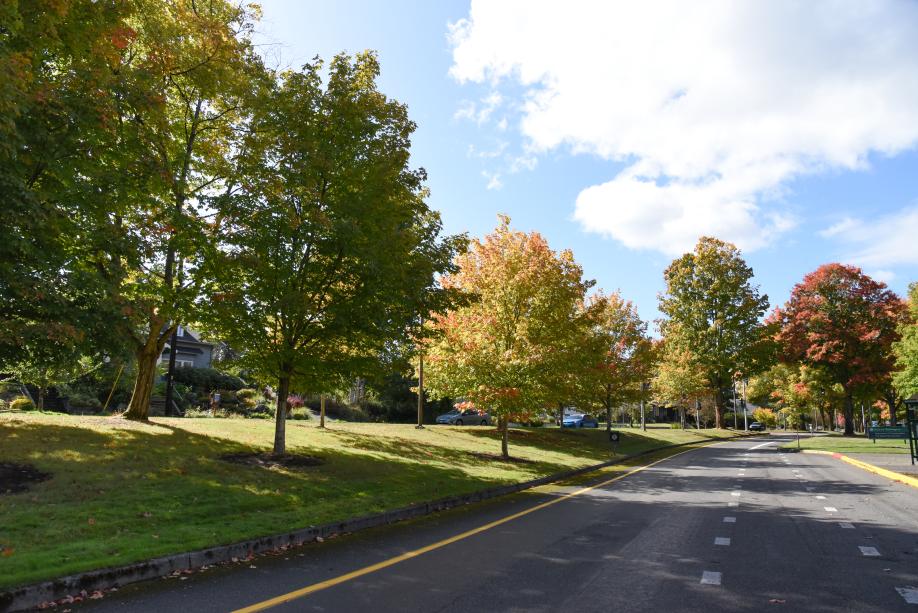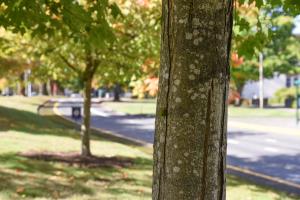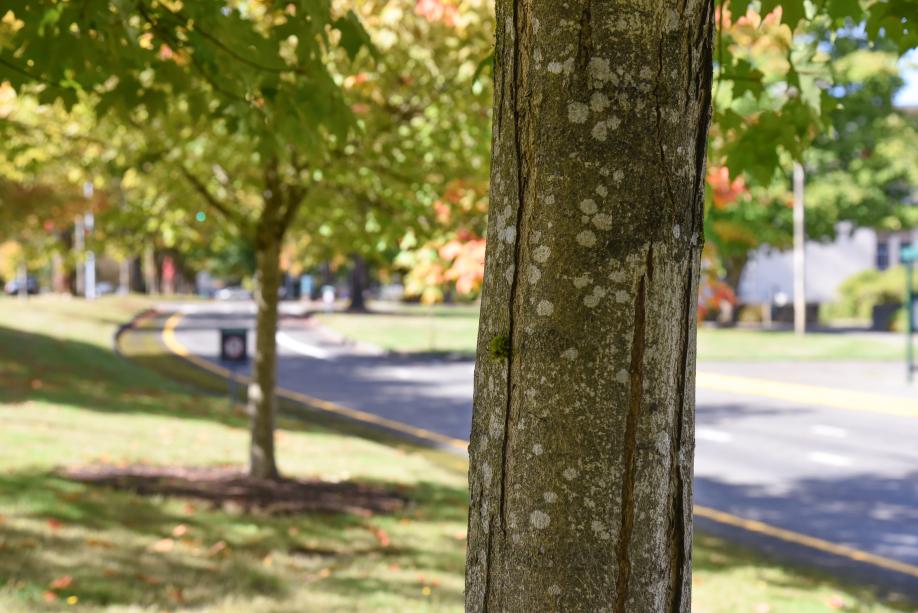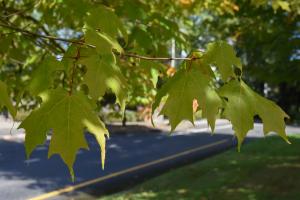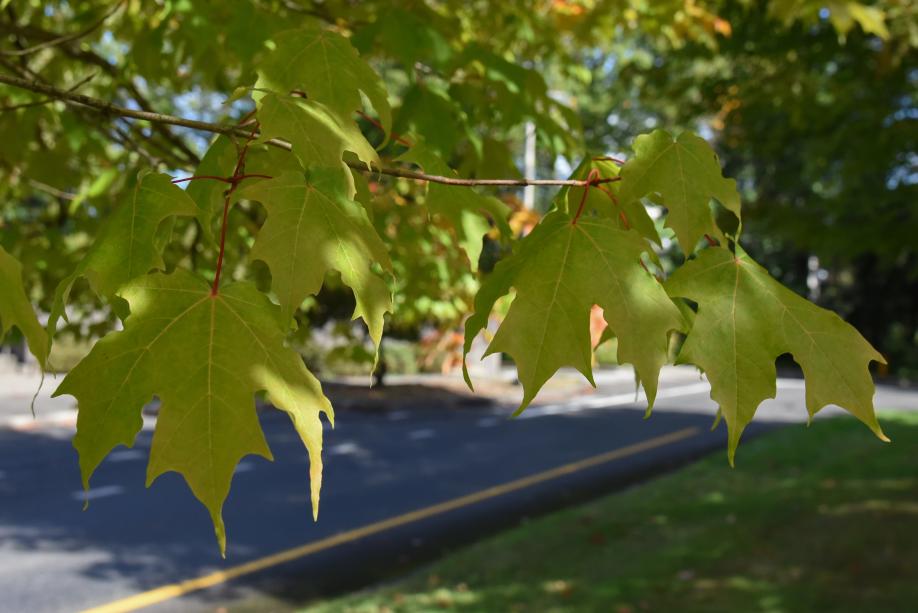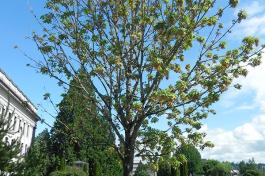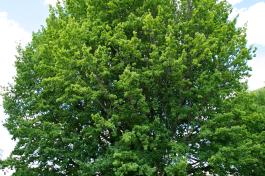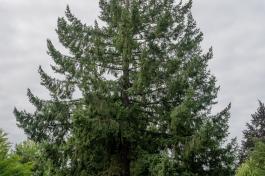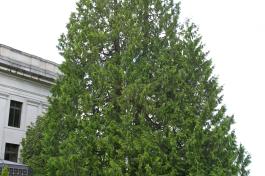Sugar Maple
Acer saccharum
Learn about the sugar maple including when and why it was planted, how to identify it, and where to find it on campus.
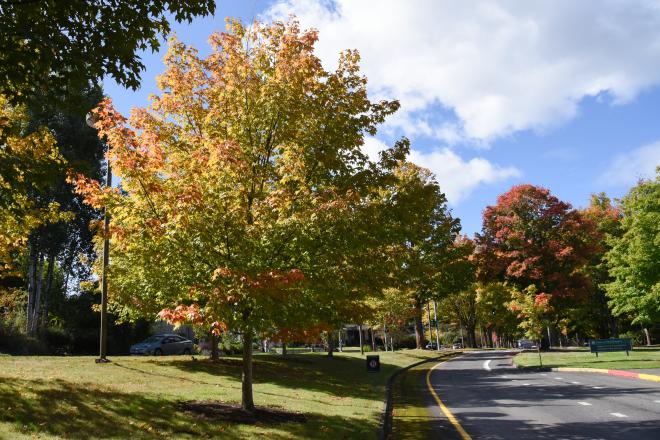
Tree Facts
Traits
- Palmate leaves have five pointy lobes notched with rounded, U-shaped sinuses.
- Leaves are up to seven inches long.
- Leaves, branches, and buds are arranged opposite on their parent stems.
- Thick, rough bark that can turn white.
Native Range
- Eastern North America
Story of the Tree
Sugar maples line Maple Park Avenue from Capitol Way to Jefferson Street.
The name of the sugar maple refers to its sap that can be cooked down into a sweet syrup.
These trees begin flowering between late March and mid-May. In the fall, they have brightly colored leaves of yellow, orange, and red. They produce double samara, which are small, V-shaped seeds that twirl in the wind as they fall from the trees.
These trees are relatives of our native big leaf maple, but the two trees are unlike in form. If you were to hold big leaf maple leaf next to a sugar maple leaf, the sugar maple leaf would look tiny in comparison.


